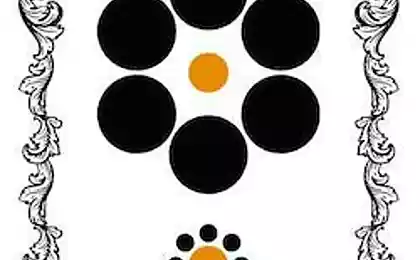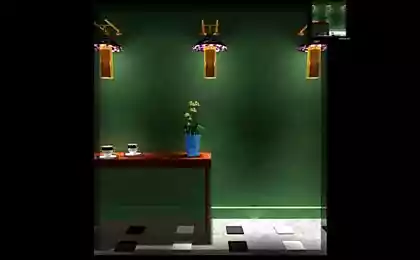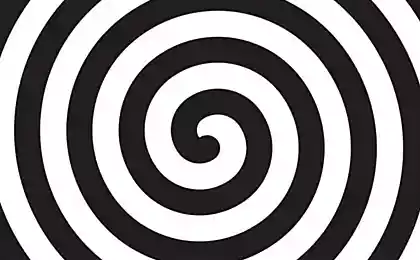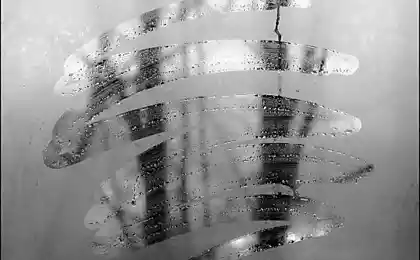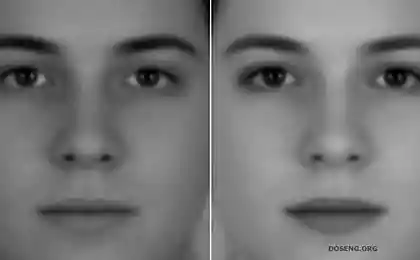1952
Optical illusion
Optical illusions - it is nothing like an optical illusion of the brain. After all, when we look at the picture, our eye sees one, and the brain at the same time starts to protest and claim that it does not. It turns out that our mind creates the illusion that begins to analyze the color, the position of the light source, the location of the edges or corners, etc. Because of this, and there is a correction of visual images.
Be careful! Some illusions can cause tearing, headache, and disorientation in space.
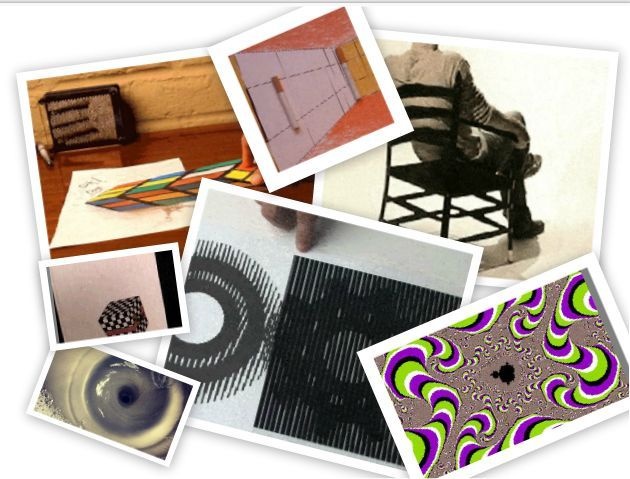
Chair invisible. The optical effect that creates the viewer a false idea of the location of seats, due to the original design of the chair, invented by French studio Ibride.

Volume Rubik's Cube. Picture looks so realistic that there is no doubt that this is a real thing. Twisting a piece of paper, it is clear that this is just deliberately distorted.
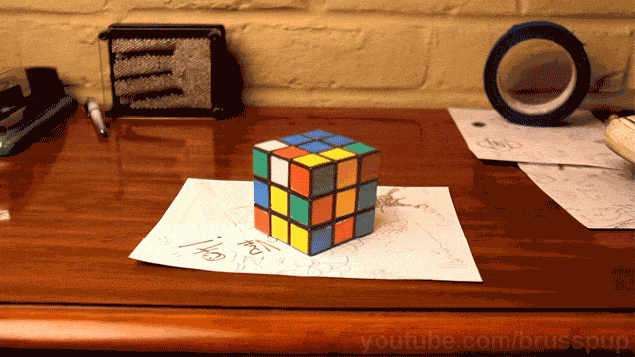
It's not animation SIFCO. This is a common picture, all the elements which are absolutely still. It is your perception of you playing. Hold your eyes for a few seconds at one point, and the picture stops moving.

Look at the cross in the center. Peripheral vision turns into beautiful faces of monsters.
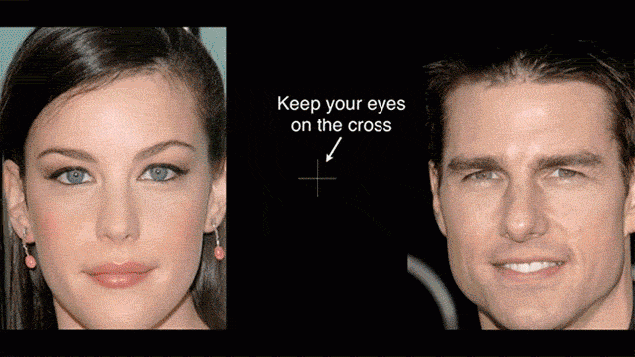
Flying Cube. What looks like a cube floating in the air, it's actually drawing on a stick.
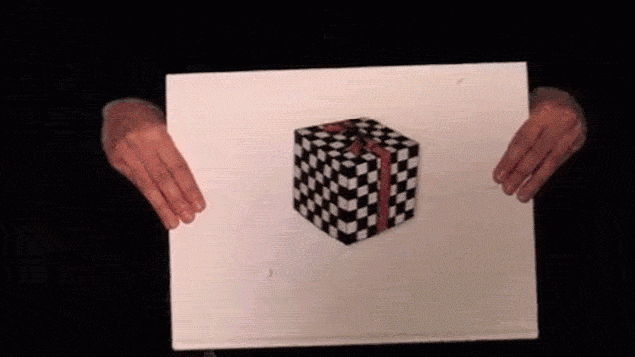
Eye? Shot by photographer Liamm, who shot a foam shell, but soon realized that it was the eyes watching him.

Which way to turn the wheel?
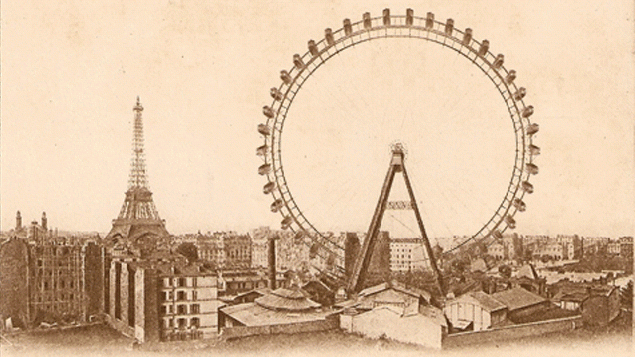
Hypnosis. See, without blinking, in the middle of the picture for 20 seconds, and then turn the look on someone's face or a wall.
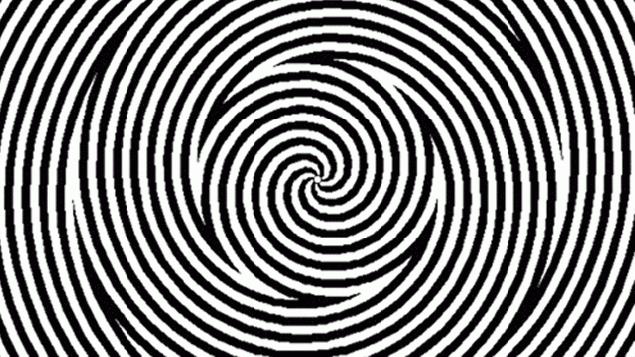
Four circles. Be careful! This optical illusion can cause headaches for up to two hours.
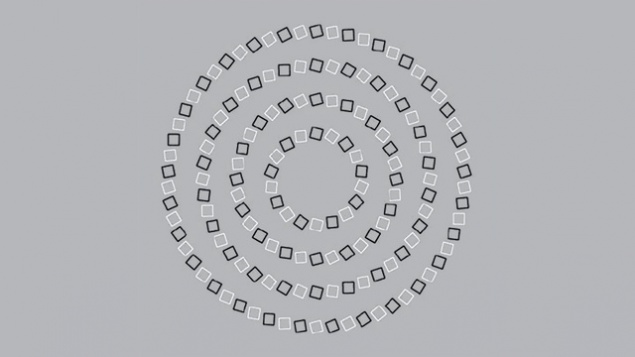
Arranges squares. It seems that the four white lines are moving chaotically. But it is necessary to impose on them squares image files archive as everything is quite natural.
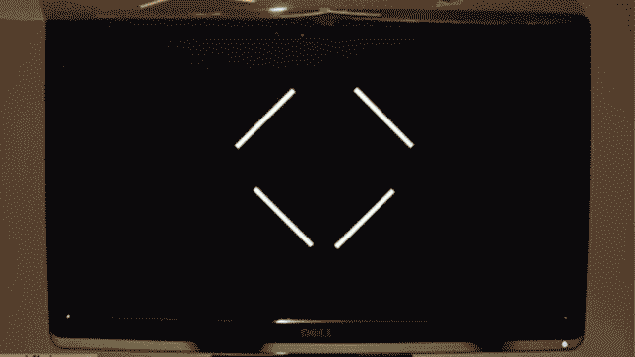
The birth of the animation. Animated images overlaid on the finished drawing a grid of black parallel lines. Before our eyes, static objects begin to move.
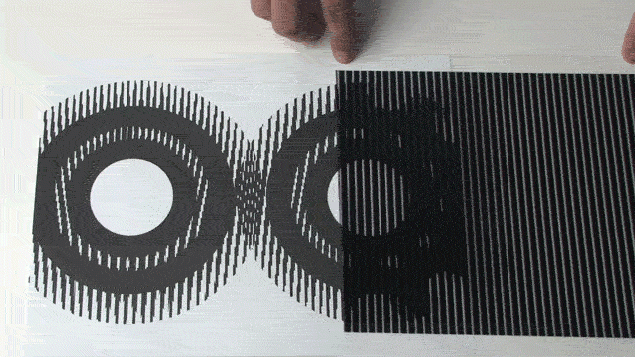
The same or different? As two cigarettes at the same time may be different of the same size?
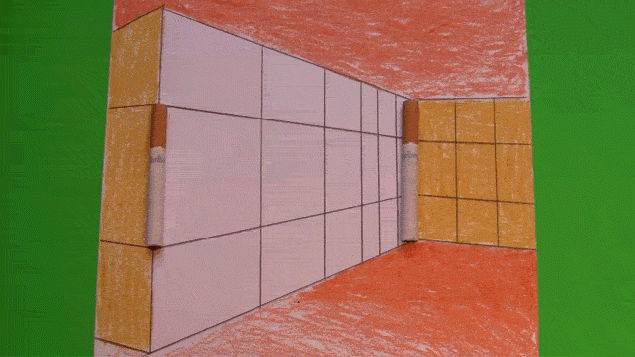
Infinite Corridor. Alternately closing the floor or the walls of the corridor, you can slow down or accelerate the movement.
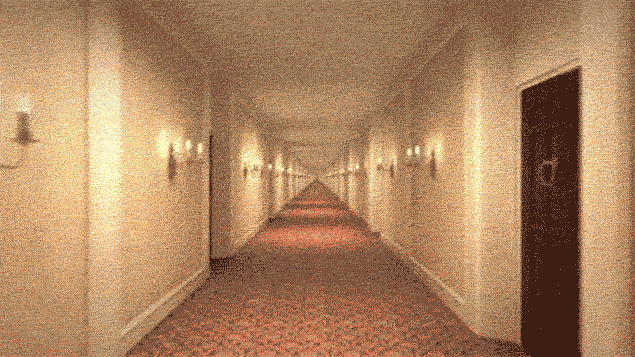
Kaleidoscope. The illusion of movement, based on the works Akioshi Kitaoka - professor of psychology at the University (Ritsumeikan) in Tokyo, world famous for its many illusions of movement.

Source: li-day.ru
Be careful! Some illusions can cause tearing, headache, and disorientation in space.

Chair invisible. The optical effect that creates the viewer a false idea of the location of seats, due to the original design of the chair, invented by French studio Ibride.

Volume Rubik's Cube. Picture looks so realistic that there is no doubt that this is a real thing. Twisting a piece of paper, it is clear that this is just deliberately distorted.

It's not animation SIFCO. This is a common picture, all the elements which are absolutely still. It is your perception of you playing. Hold your eyes for a few seconds at one point, and the picture stops moving.

Look at the cross in the center. Peripheral vision turns into beautiful faces of monsters.

Flying Cube. What looks like a cube floating in the air, it's actually drawing on a stick.

Eye? Shot by photographer Liamm, who shot a foam shell, but soon realized that it was the eyes watching him.

Which way to turn the wheel?

Hypnosis. See, without blinking, in the middle of the picture for 20 seconds, and then turn the look on someone's face or a wall.

Four circles. Be careful! This optical illusion can cause headaches for up to two hours.

Arranges squares. It seems that the four white lines are moving chaotically. But it is necessary to impose on them squares image files archive as everything is quite natural.

The birth of the animation. Animated images overlaid on the finished drawing a grid of black parallel lines. Before our eyes, static objects begin to move.

The same or different? As two cigarettes at the same time may be different of the same size?

Infinite Corridor. Alternately closing the floor or the walls of the corridor, you can slow down or accelerate the movement.

Kaleidoscope. The illusion of movement, based on the works Akioshi Kitaoka - professor of psychology at the University (Ritsumeikan) in Tokyo, world famous for its many illusions of movement.

Source: li-day.ru
